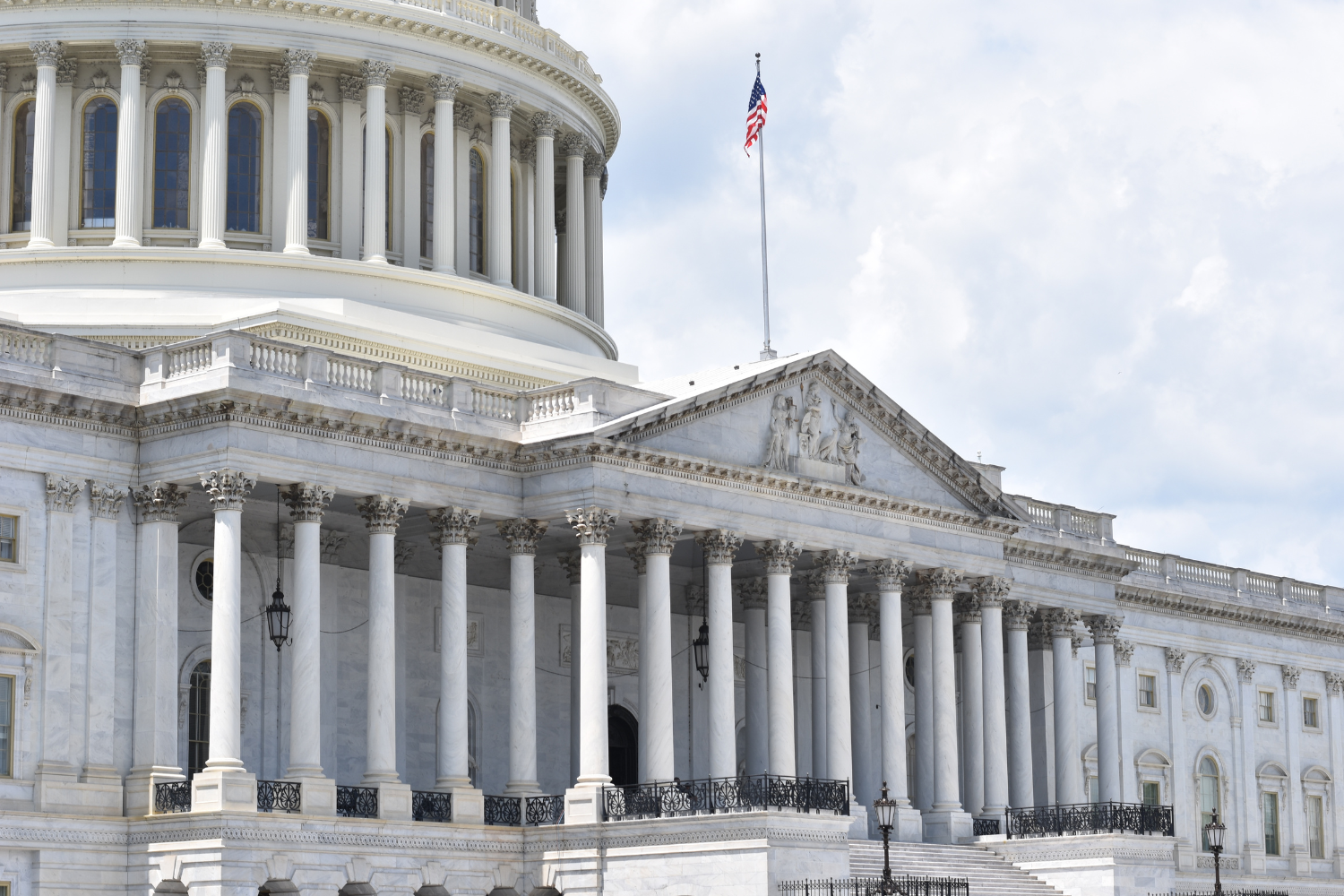This paper was submitted as part of Dr. Glassman's application for ACOFP Fellowship, which recognizes exceptional national, state, and local service through teaching, authorship, research, or professional leadership. Visit the ACOFP Fellows page to learn more about fellowship and the nomination process.
ABSTRACT
Obesity rates have been increasing over the last few decades, and have only worsened during the COVID-19 pandemic lockdowns. There is an estimated 75% of US adults expected to have overweight or obesity by 2030, of whom 25% are expected to have severe obesity1. This is concerning for a few reasons, as obesity is typically associated with chronic conditions such as type 2 diabetes, cardiovascular disease, hyperlipidemia, and osteoarthritis. Obesity has also been linked to depression (which increased during the COVID-19 pandemic lockdowns). However, the link between obesity and cancer is of greater concern. There are many cancers associated with obesity, including: breast, colon, and prostate. Metabolic syndrome is also related to obesity, and is of concern due to its risk of developing subsequent atherosclerotic heart disease, stroke, fatty liver, prediabetes, and type 2 diabetes mellitus1.
Given the known health risks of obesity, it is important that we improve available treatment. This can be with diet and/or exercise changes (i.e., lifestyle management), with prescription management, with surgeries, or with a combination of the above. Weight loss of as little as 5-7% can improve several diabetes risk factors. Dietary changes are essential in both treating and preventing type 2 diabetes1.
This paper will focus on the lifestyle aspect of treating obesity, specifically the effects of intermittent fasting. Intermittent fasting has various potential benefits. This paper will focus on the benefits of time restricted feeding.
DISCUSSION
Calorie restriction is commonly recommended as the initial lifestyle change for a lot of patients with obesity; although it is effective, it is not easy to maintain1. Part of the reason why calorie restriction is so difficult to maintain is that the body responds to energy restriction, and as weight is lost, there is a decrease in the body’s resting energy expenditure2.
The current 21st century lifestyle promoted irregular eating patterns on a daily basis, which have led to adverse effects on circadian biology, regardless of macronutrient composition; the current lifestyle leads to an almost persistent postprandial state3. Simple, yet efficient, dietary changes are required to help reverse changes associated with a persistent postprandial state, e.g., diabetes and prediabetes, as well as the overall changes associated with overweight and obesity.
Intermittent fasting has shown more promise in aiding obese patients reach weight loss goals. Intermittent fasting alternates between periods of eating and periods of prolonged fasting; the fasting may be for hours or for days, and the calorie intake during the eating period may be restricted or may be unrestricted. Time restricted feeding, especially a 16:8 hour fasting: eating ratio, or a 5:2 day diet of an ad libitum diet alternating with a very low carb diet, are among the most commonly studied intermittent fasting dietary patterns.
Intermittent fasting leads to body and tissue metabolism changes during the fasting period, which is believed to the source for the positive effects of intermittent fasting. These improvements include: improved body mass, reduced markers and risk factors for cardiovascular disease, cardiomyopathy, inflammation, metabolic diseases, cancer, retinopathy, improved neuroplasticity, and improved cognition1. The above improvements can occur in the absence of weight loss, which is a notable difference from the basic calorie restriction.
Additional benefits of time restricted feeding include reduced fasting glucose, insulin, and insulin resistance, as well as improvements in insulin sensitivity and beta cell function, depending on the duration of the fast4. These effects are suspected to be due to a metabolic switch that occurs when changing from a fed to a fasting state; this change causes hepatocyte production of ketone bodies, thereby increasing insulin sensitivity and decreasing fat accumulation. The metabolic switch will also enhance the insulin sensitivity of muscle cells4.
Calorie restriction in conjunction with intermittent fasting has been shown to trigger a ‘metabolic switch’ across multiple metabolic pathways. It has also been suggested that intermittent fasting leads to reduced hepatic glycogen, which subsequently leads to activation of fatty acid use from adipose tissue and its hepatic metabolism. Other metabolic changes (through pathways outside of the scope of this paper) include reduced blood glucose and reduced amino acid levels. Intermittent fasting in addition to exercise leads to metabolic changes as well, including stimulation of cell repair, improved cognition and motor coordination1. Various studies have given mixed results on the addition of exercise to intermittent fasting regarding weight loss. In a review by Welton, Minty, and O’Driscoll, one study showed weight loss doubles, and another showed that adding exercise provides no benefit for weight loss5. There have also been mixed results regarding time restricted feeding’s effects on triglycerides and LDL cholesterol4.
Intrinsic aerobic capacity is a predictor of metabolic health; both intrinsic aerobic capacity and cardiorespiratory fitness are predictors of lifespan and health-span in humans6. A study by Smyers, Koch, and Britton looking at effects of intermittent fasting in obesity-prone, low-fitness rats demonstrated that food restriction did change physical activity in high and low capacity runners, though short term restriction led to increased activity and subsequent decreased activity as food restriction progressed6. In this study the low capacity runners started with a greater fat mass compared to the high capacity runners, but after 14 weeks of intermittent fasting the low capacity runner had decreased fat mass, with little change in the high capacity runners’ fat mass, ultimately leading to similar fat mass between the two groups6. In general, the rats were more active on fed days than on fasting days; body weight also differed on fed versus fasting days for both groups6. Food intake was noted to be significantly decreased after one year of continuous intermittent fasting, and both groups had significantly lower fat mass after the year of intermittent fasting (compared to ad libitum intake), though the low capacity runners had significantly more fat loss than the high capacity runners6. The data from this study suggests that alternate day fasting may be effective for weight loss in the obesity-prone, low-aerobic capacity phenotype, and that continued intermittent fasting prevents appreciable gains in both weight and fat over time6.
In a 12 week study by Wilkinson, Manoogian, and Zadourian looking at time restricted feeding where many participants had prediabetes in addition to obesity, there was a significant decrease in blood pressure, total cholesterol, LDL cholesterol, non-HDL cholesterol, BMI, and waist circumference7. A separate 8 week study by Parvaresh, Razavi, and Yaghooblo compared alternate day fasting with calorie restriction. This study demonstrated that alternate day fasting was able to reduce body weight, waist circumference, systolic blood pressure, and fasting glucose when compared to calorie restriction8. Time restricted feeding has also been shown to decrease appetite hormones, meaning that there is less hunger at bedtime and increased energy overall1,5. Other studies have shown that intermittent fasting will decrease total cholesterol, LDL cholesterol, triglycerides, and fasting insulin9.
A crossover study by Parr, Devlin, and Radford looking at time restricted feeding for 8 hours versus an extended feeding period of 14 hours found multiple benefits to time restricted feeding. These benefits included: favorable insulin changes throughout the day, with reduced peak postprandial insulin at breakfast and lunch, increased glucose sensitivity when dinner was consumed by 1800 hours, and lower self reported ratings of hunger and prospective food consumption from lunch onward3. This study also showed that delaying breakfast by 2 to 3 hours can prevent the early morning elevation in glucose and insulin. Delaying breakfast can also help to prevent peak cortisol levels (which would likely contribute to higher peak glucose levels seen with earlier breakfast consumption)3. The study also demonstrated that late evening meal consumption increases the postprandial blood glucose response to carbohydrate intake at breakfast, indicating that over time, a late dinner may be linked to the development of metabolic disease3. Additional benefits to time restricted feeding include limited nighttime food intake of items such as sweets, alcohol, and snacks.
A study by Regmi, Chaudhary, and Page looked at delayed versus early time restricted feeding in mice10. Skipping breakfast in humans is the equivalent to eating late during the dark phase in mice, and has been linked to weight gain and worse glucose control10. Both an early and a delayed time restricted feeding led to lower body weight in the mice, and both showed improved glucose tolerance in the mice. However, the delayed time restricted feeing group was less effective than the early time restricted feeding group at reducing body weight and fat mass10. Delaying the initiation of time restricted feeding by 4 hours does not seem to impact the beneficial effects of time restricted feeding in mice, and can be used to support a delayed, but still stable, time restricted feeding pattern10.
One of the few human studies on time restricted feeding in humans compared a 4 hour versus a 6 hour time restricted feeding to a control group with no meal timing restrictions for 10 weeks in adults with obesity4. There was no requirement to monitor calorie intake during the feeding periods in any of the groups. This study did indeed demonstrate a statistically significant difference in weight loss in both of the time restricted feeding groups compared to the control group, though there was not a significant difference between the 4 and the 6 hour time restricted feeding groups. Both the 4 and the 6 hour time restricted feeding groups demonstrated a change in fasting insulin and insulin resistance, both for the better4. In contrast to results from other time restricted feeding studies, this particular study did not demonstrate a significant change in systolic or diastolic blood pressure4. As with blood pressure, the effects of time restricted feeding on cholesterol levels are variable; this study did not show a significant change in triglycerides, HDL, or LDL cholesterol with either a 4 or a 6 hour time restricted feeding; one potential reason for these results is that the study participants did not have high cholesterol at baseline4. The study did show that a 4 or 6 hour eating window led to patients with obesity decreasing their caloric intake by about 550 kcal/day4. It is possible to ensure greater compliance with time restricted feeding just by nature of restricting the eating window, compared to calorie restriction, which the majority of patients find to be much more difficult. Although time restricted feeding leads to a similar decrease in energy intake compared to calorie restriction (ranging between 20-30%), time restricted feeding leads to less weight loss than calorie restriction in a similar time frame, for unclear reasons4.
| Study authors | Glucose & insulin | Lipids | Body weight | Energy intake | Blood pressure |
| Parr, Evelyn, et al. | Lowest 3 hour postprandial glucose after breakfast and lunch. Lowest insulin after breakfast and lunch | N/A | N/A | N/A | N/A |
| Regmi, Prashant, et al. | Glucose tolerance increased, and insulin decreased in time restricted feeding (TRF) | Decreased liver triglycerides (only in the high fat diet group) | Lower in the both the early and delayed TRF groups | No change in TRF, though it does tend to be lower in this group | N/A |
| Cienfuegos, Sofia, et al | Greatest decrease in insulin was in the 4 & 6 hour TRF groups | N/A | No change in 4 & 6 hour TRF groups, though both lost more than the control group | Decreased in 4 & 6 hour TRF groups by about 550 kcal/day | No change between the 4 & 6 hour TRF groups compared to the control group |
| Wilkinson, Michael J, et al. | Fasting glucose improved, relative to the magnitude of starting hyperglycemia | Decreased total, LDL & non-HDL cholesterol | Decreased in the 10 hour TRF group | Decreased in the 10 hour TRF group | Decreased SBP & DBP |
| Parvaresh, A, et al. | Decreased fasting glucose in the alternate day fast group. No change in insulin. | No significant change in triglycerides, total, or LDL cholesterol | Decreased in the alternate day fast group, without a significant change in BMI | N/A | Decreased SBP in the alternate day fast group, without a significant change in the DBP |
While intermittent fasting is a lifestyle modification, and therefore not something we typically associate with side effects, there are certain reactions to be aware of related to prolonged fasting. These include: hypoglycemia, muscle wasting, gout, postural hypotension, cardiac arrhythmias, menstrual irregularities, peptic ulcers, and upper gastrointestinal bleeding1. Other possible adverse events include nausea, constipation, diarrhea, headaches, fatigue, and irritability, though these did not change from baseline to post-treatment4. Additional concerns are related to possible binge eating, though many obese patients who adhere to intermittent fasting do not develop binge eating patterns or purging, and do indeed report improved body image and less depression5. Some of these adverse effects can be mitigated by changing medications and/or doses, e.g., for a patient using a sulfonylurea, the dose should be decreased by 50% when fasting. Other mitigating factors include staying well hydrated to avoid postural hypotension as well as gout, and avoiding alcohol intake to prevent gout flares1.
There are also practical barriers to time restricted feeding, including having a busy work schedule, family meal schedules, and restrictions on eating at social occasions3. One way to offset the difficulty with social barriers is to stick with time restricted feeding for five out of seven days. A rodent study showed that having time restricted feeding only on weekdays still elicited a positive effect on weight loss3. Another option is to have a later eating window, to allow for more engagement in family meals and social eating4.
Overall, intermittent fasting does show results regarding weight loss and improvement of many metabolic diseases. Depending on the method of intermittent fasting, it can be sustainable in the long term, which is important when looking for lifestyle measures to be changed regarding weight loss.
REFERENCES
- Rajpal, Aman and Faramarz Ismail-Beigi. “Intermittent fasting and ‘metabolic switch’: Effects on metabolic syndrome, prediabetes and type 2 diabetes.” Diabetes Obesity Metabolism. 2020; 22: 1496-1510.
- Byrne, NM, et al. “Intermittent energy restriction improves weight loss efficiency in obese men: the MATADOR study.” International Journal of Obesity, 2018; 42: 129-138.
- Parr, Evelyn, et al. “A Delayed Morning and Earlier Evening Time-Restricted Feeding Protocol for Improving Glycemic Control and Dietary Adherence in Men with Overweight/Obesity: A Randomized Controlled Trial.” Nutrients. 2022; 12: 505; doi:10.3390/nu12020505.
- Cienfuegos, Sofia, et al. “Effects of 4- and 6-h Time-Restricted Feeding on Weight and Cardiometabolic Health: A Randomized Controlled Trial in Adults with Obesity.” Cell Metabolism. 2020; 32: 366-378.
- Welton, Stephanie, et al. “Intermittent fasting and weight loss Systematic review.” Canadian Family Physician. February 2020; 66: 117-125.
- Smyers, Mark E, et al. “Enhanced weight and fat loss from long-term intermittent fasting in obesity-prone, low-fitness rats.” Physiology & Behavior. 2021; 230: 113280; doi.org/10.1016/j.physybeh.20220.113280.
- Wilkinson, Michael J, et al. “Ten-Hour Time-Restricted Eating Reduces Weight, Blood Pressure, and Atherogenic Lipids in Patients with Metabolic Syndrome.” Cell Metabolism. 2020; 31: 92-104.
- Parvaresh, A, et al. “Modified alternate-day fasting vs. calorie restriction in the treatment of patients with metabolic syndrome: A randomized clinical trial.” Complementary Therapies in Medicine. 2019; 47: 102187; 10.1016/j.ctim.2019.08.021
- Patikorn, Chanthawat, et al. “Intermittent Fasting and Obesity-Related Health Outcomes An Umbrella Review of Meta-analyses of Randomized Clinical Trials.” JAMA Network Open Nutrition, Obesity, and Exercise. 2021; 4 (12): e2139558.
- Regmi, Prashant, et al. “Early or delayed time-restricted feeding prevents metabolic impact of obesity in mice.” Journal of Endocrinology. 2021; 248: 75-86.






